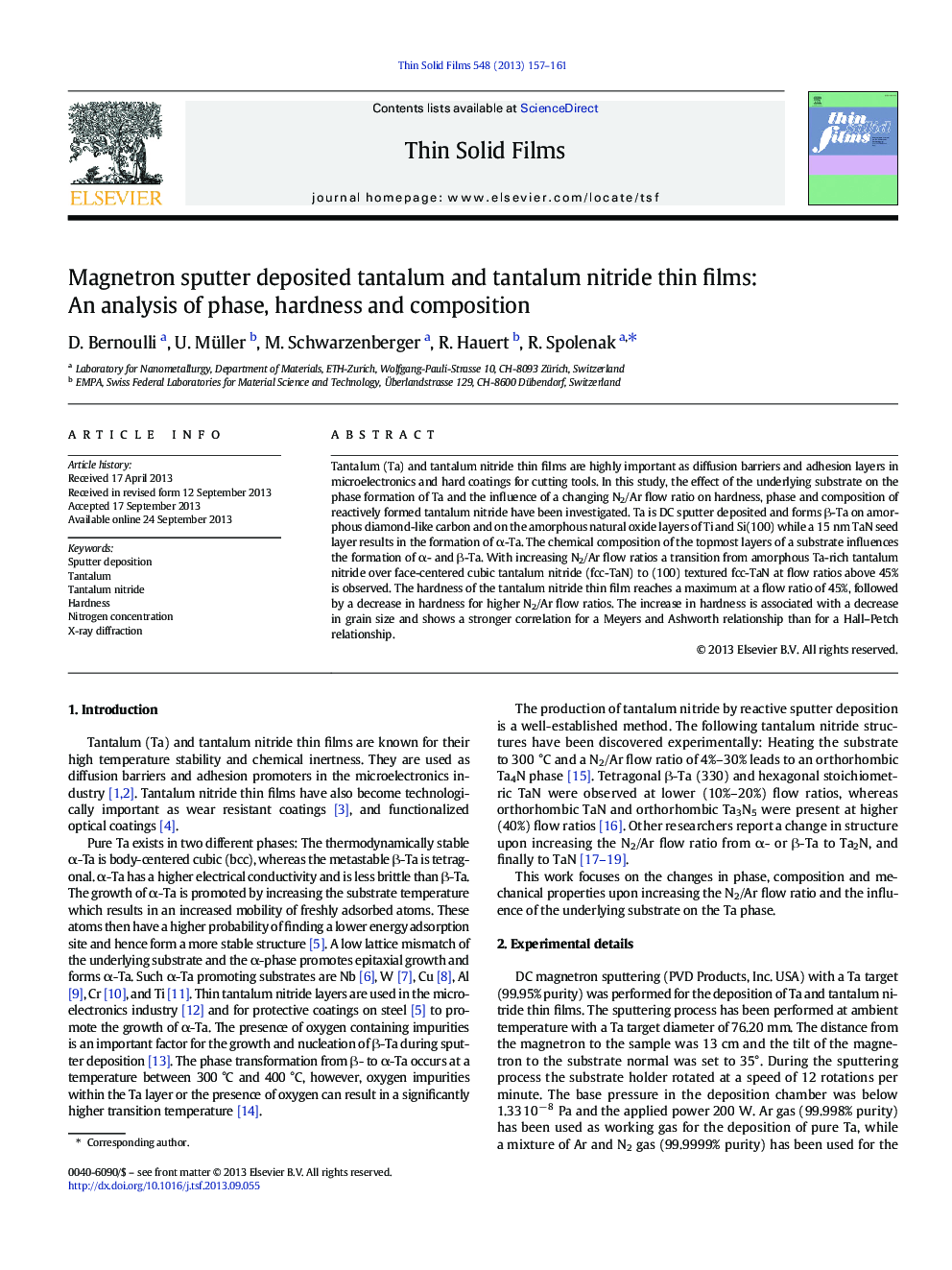| Article ID | Journal | Published Year | Pages | File Type |
|---|---|---|---|---|
| 1665797 | Thin Solid Films | 2013 | 5 Pages |
•Chemical composition of the substrate influences the phase of deposited Ta.•FCC-TaN seed layer leads to α-Ta on the natural oxide layers of Ti and Si(100).•Meyers and Ashworth relationship correlates stronger than Hall–Petch relationship.
Tantalum (Ta) and tantalum nitride thin films are highly important as diffusion barriers and adhesion layers in microelectronics and hard coatings for cutting tools. In this study, the effect of the underlying substrate on the phase formation of Ta and the influence of a changing N2/Ar flow ratio on hardness, phase and composition of reactively formed tantalum nitride have been investigated. Ta is DC sputter deposited and forms β-Ta on amorphous diamond-like carbon and on the amorphous natural oxide layers of Ti and Si(100) while a 15 nm TaN seed layer results in the formation of α-Ta. The chemical composition of the topmost layers of a substrate influences the formation of α- and β-Ta. With increasing N2/Ar flow ratios a transition from amorphous Ta-rich tantalum nitride over face-centered cubic tantalum nitride (fcc-TaN) to (100) textured fcc-TaN at flow ratios above 45% is observed. The hardness of the tantalum nitride thin film reaches a maximum at a flow ratio of 45%, followed by a decrease in hardness for higher N2/Ar flow ratios. The increase in hardness is associated with a decrease in grain size and shows a stronger correlation for a Meyers and Ashworth relationship than for a Hall–Petch relationship.
